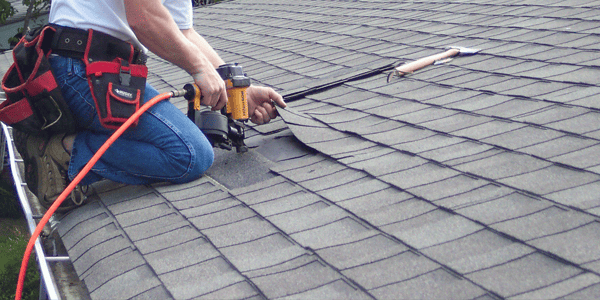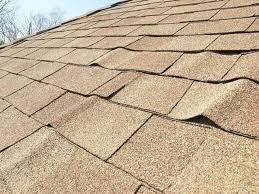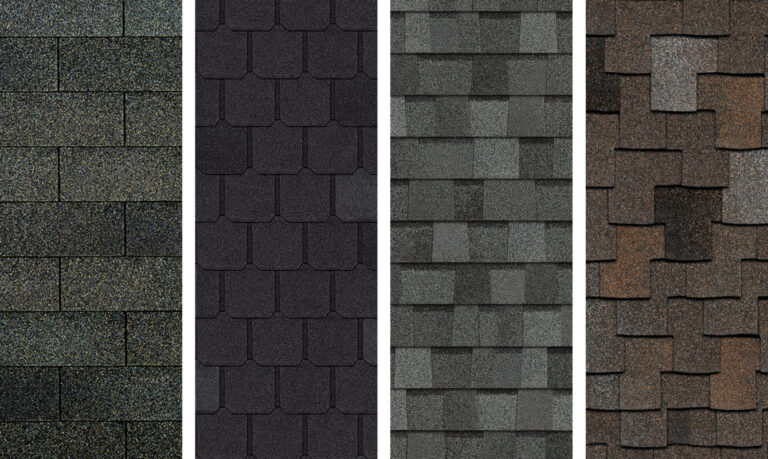Are you considering a roof replacement? As a homeowner, it’s essential to ensure that your home is well-maintained and protected. One crucial aspect of home maintenance is the roof, and when it’s time for a replacement, it’s important to be well-informed.
A roof should last 15-30 years, but that can be even longer.
In this comprehensive guide, we will discuss everything you need to know about 50 year shingles and more. Whether you’re unfamiliar with roof replacement or looking for specific information about 50 year shingles, this guide has got you covered.
The Importance of Roof Replacement
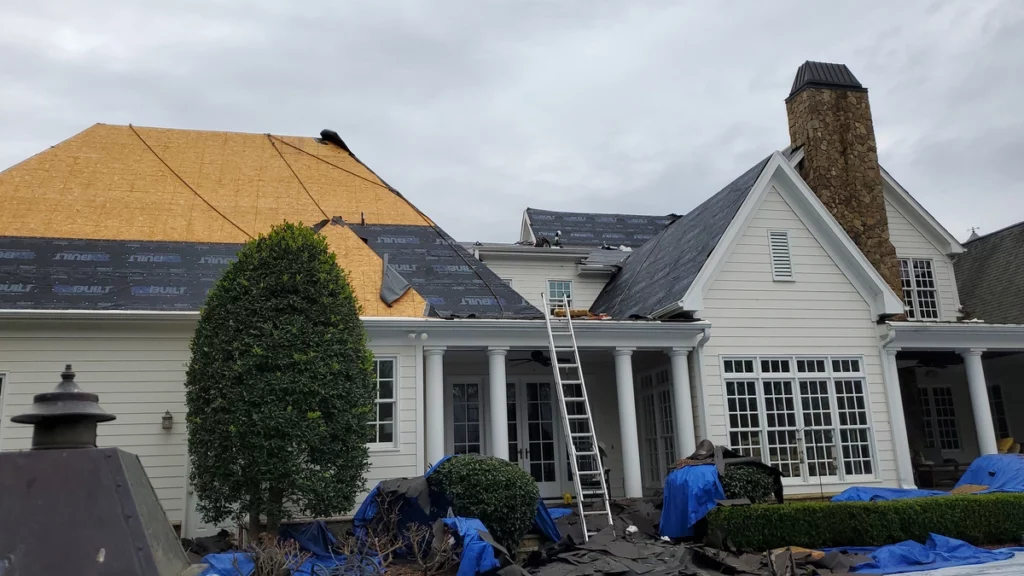
As a homeowner, it’s crucial to understand the signs that indicate the need for roof replacement. If your roof is showing signs of wear and tear, such as missing shingles, leaks, or visible damage, it’s time to consider a replacement.
Exploring 50 Year Shingles
When it comes to roof replacement materials, 50 year shingles are becoming increasingly popular among homeowners. These shingles offer unmatched durability and longevity, making them an excellent investment for your home.
What are 50 Year Shingles?
50 year shingles, also known as architectural or laminate shingles, are composed of multiple layers of material bonded together. Unlike traditional three-tab shingles, these shingles are thicker and more durable, providing improved resistance against harsh weather conditions.
These shingles are typically made from asphalt and are designed to withstand high winds, heavy rain, and even hail damage. Their unique construction allows them to hold up better against extreme weather conditions, ensuring that your home remains protected.
Benefits of 50 Year Shingles
As the name suggests, 50 year shingles have a longer lifespan compared to other roofing materials. Investing in these shingles ensures that you won’t have to worry about a replacement anytime soon. This offers cost savings in the long run, as you avoid the need to replace your roof frequently.
The multiple layers of 50 year shingles also provide superior protection against wind, hail, and other weather elements. This can significantly reduce the risk of damage to your home during extreme weather events. The thickness and durability of these shingles make them less prone to cracking or breaking, ensuring that your home remains safe and secure. A
dditionally, 50 year shingles are fire-resistant, adding another layer of protection for your home and reducing the risk of fire damage. This can provide peace of mind, especially in areas prone to wildfires.
50 year shingles come in a wide range of colors and styles, allowing you to enhance the curb appeal of your home. Whether you prefer a traditional or modern look, these shingles offer versatility and beauty. With options like Owens Corning and GAF shingle colors, you can find the perfect match for your home’s style.
With statistics showing a 69% ROI on home improvements, you can’t go wrong with this investment.
Choosing the Right Roofing Material
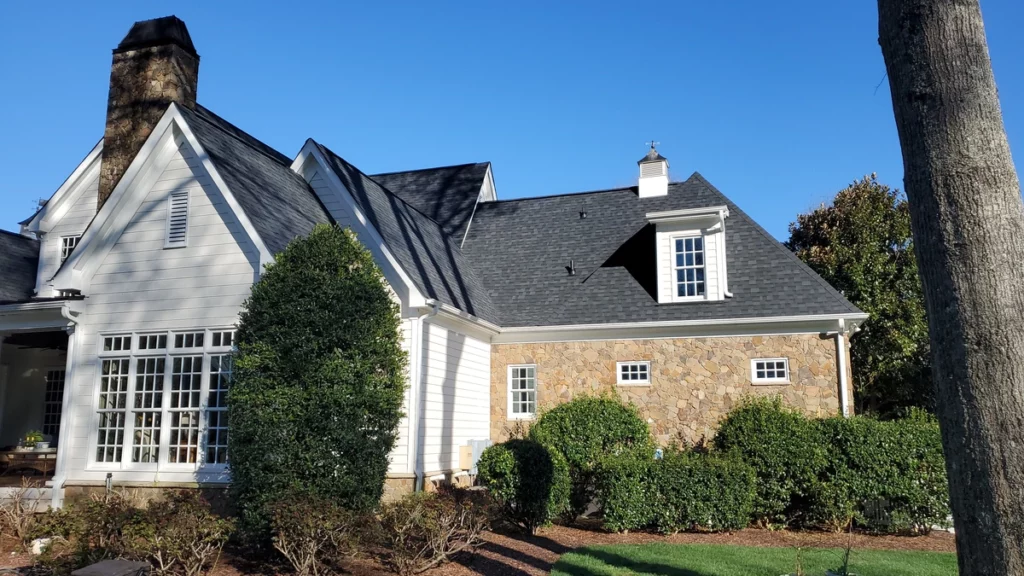
While 50 year shingles offer many benefits, it’s essential to consider your specific needs and preferences when choosing a roofing material. Other popular options include slate, metal, and cedar shingles. Each material has its unique characteristics and advantages.
Slate
Slate shingles are known for their natural beauty and longevity. They can last over a century, providing a truly long-term solution. However, they can be quite expensive and require professional installation due to their heavy weight.
Metal
Metal roofs are known for their durability and energy efficiency. They come in a variety of styles, including standing seam, metal tiles, and metal shingles. Metal roofs can last 40 to 70 years and are low maintenance. They are also fire-resistant, lightweight, and environmentally friendly. However, the initial cost can be higher compared to other roofing materials.
Cedar
Cedar shingles offer a rustic and natural look to your home. They are known for their insulation properties and can withstand harsh weather conditions. Cedar shingles provide natural resistance to insects and decay but require regular maintenance to prevent moss and algae growth.
Hiring a Professional Roofing Contractor
To ensure a successful roof replacement, it’s crucial to hire a professional roofing contractor. The expertise and experience of a roofing contractor play a significant role in the quality and longevity of your new roof.
When selecting a roofing contractor, consider the following.
Experience
Look for a contractor with a track record of successful roof replacements. An experienced contractor will have the necessary skills and knowledge to handle your project efficiently.
License and Insurance
Verify that the contractor holds the required licenses and insurance to protect both parties during the project. This includes liability insurance and workers’ compensation coverage.
Reviews
Read reviews and testimonials from previous customers to gauge the contractor’s reputation and quality of work. Positive reviews indicate customer satisfaction and reliability.
Guarantees and Warranties
Inquire about the guarantees and warranties provided by the roofing contractor for both materials and workmanship. A reputable contractor will stand behind their work and offer warranties for peace of mind.
Understanding the Roofing Process
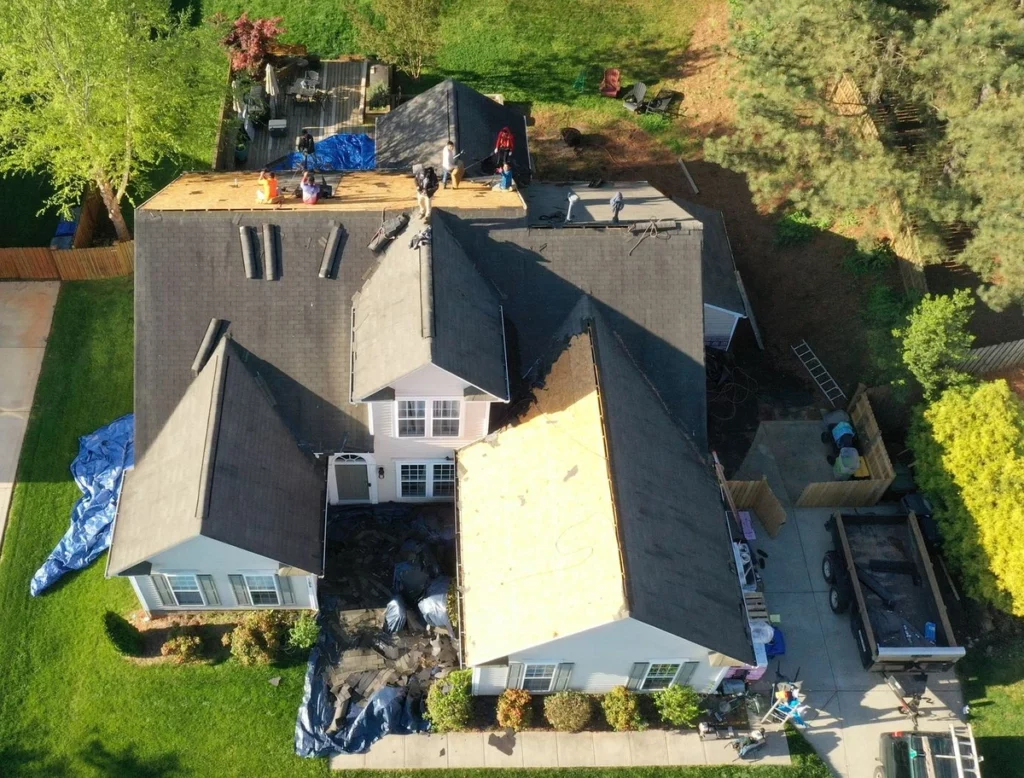
Replacing a roof is a complex process that involves several steps. Understanding the roofing process can help you make informed decisions and ensure a smooth transition. It’s important to work closely with your roofing contractor to ensure that all necessary steps are followed.
- Inspection: The roofing contractor will conduct a thorough inspection of your existing roof to assess its current condition and identify any underlying issues.
- Removal: If necessary, the old roof will be removed to create a clean and stable base for the new materials.
- Repairs or Replacement: The underlying structure of the roof, such as the plywood decking, may need repairs or replacement. This ensures that the new roof is installed on a stable and secure foundation.
- Installation of New Materials: The roofing contractor will install the chosen roofing materials, whether it’s 50 year shingles or another option. This involves precise measurements, careful placement, and proper securing of the materials.
- Final Inspections: After the installation is complete, the roofing contractor will conduct final inspections to ensure that the roof meets quality standards and local building codes.
By understanding the roofing process, you can have better communication with your roofing contractor and have peace of mind knowing what to expect during the roof replacement project.
Start Planning Your Roof Replacement Today
Now that you have a comprehensive understanding of 50 year shingles and the roof replacement process, it’s time to take action. Begin by contacting local roofing contractors to obtain quotes and discuss your project requirements. Share your preferences, such as the desire for 50 year shingles and specific colors or styles.
In addition, check your roofing insurance coverage and inquire about the claims process if applicable. Understanding your insurance coverage and any potential reimbursement or assistance can help you better plan for your roof replacement.
Protecting your home and loved ones starts with a reliable roof. By investing in a roof replacement and choosing high-quality materials like 50 year shingles, you can enjoy peace of mind knowing that your home is well-protected.
Contact us now for a consultation, and let us guide you through the roof replacement process. Your home deserves the best, and we are here to deliver it.
